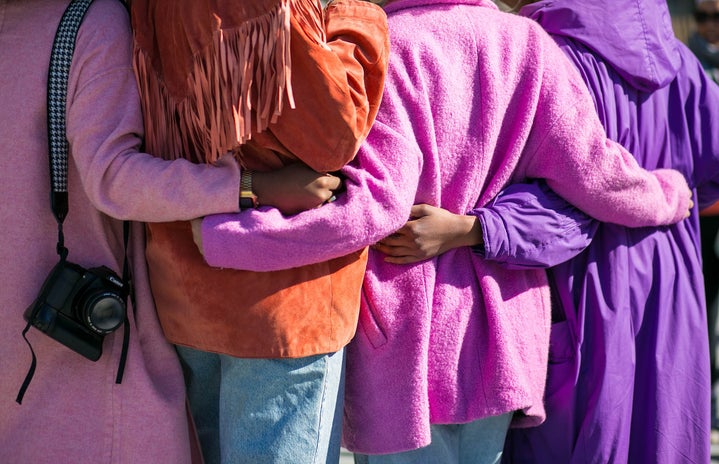Every October, a wave of pink sweeps across our campuses, social media feeds, and often on our shirts as pins, reminding us of the ongoing battle against breast cancer. But beyond the pink ribbons we wear or see, there’s a deeper story that most of us don’t know. The iconic pink ribbon, now a global symbol of awareness, strength, and solidarity, wasn’t always as recognizable as it is today. What started as a small gesture has evolved into a powerful movement that unites millions in the fight against breast cancer. For many of us, especially young women, the pink ribbon is a reminder that breast cancer does not discriminate, and that awareness and education are crucial. But where did this symbol come from? And why is it so closely tied to breast cancer awareness? As we enter Breast Cancer Awareness Month, it’s worth exploring the history of this powerful emblem, understanding its roots, and reflecting on the role it plays in not just supporting survivors, but in fostering a sense of community and empowerment among women of all ages.
The pink ribbon has a more complex origin story than most people realize, as summarized here. People can read the entire story on Breast Cancer Action’s website. It all began with Charlotte Haley, a 68-year-old woman who handcrafted peach-colored ribbons in her dining room to raise awareness about the lack of funding for cancer prevention. When SELF magazine and Estée Lauder approached Haley to incorporate her ribbon into their breast cancer awareness campaign; she declined, unwilling to commercialize her grassroots effort. In response, Estée Lauder chose pink instead, and this new version of the ribbon quickly took off, becoming the iconic emblem we recognize today.
Let’s go back even further to when ribbons were first introduced as a symbolism for cancer awareness. It all started in 1979 when Penney Laingen used yellow ribbons to express her desire for her husband’s safe return from Iran, turning the ribbon into a powerful message. This idea evolved in 1991 when AIDS activists created the red ribbon to symbolize solidarity with those suffering from the disease, creating the ribbon as a symbol for charitable causes. In the early 1990s, the Susan G. Komen Breast Cancer Foundation was the first to introduce pink visors and later ribbons to participants in its Race for the Cure. However, the symbol truly took off in 1992 when Self magazine editor Alexandra Penney and cosmetics giant Estée Lauder adopted the pink ribbon for Breast Cancer Awareness Month.
While the ribbon began as a symbol of hope and solidarity, its rise was not without resistance. Charlotte Haley, a grassroots breast cancer advocate, had initially designed a peach-colored ribbon to raise awareness about the lack of funding for cancer prevention. When approached by Self and Estée Lauder, Haley declined to commercialize her symbol, prompting the companies to shift to pink, thus launching what would become a popular representation of the breast cancer movement.
As the pink ribbon gained prominence, it was embraced by numerous corporations eager to associate their products with breast cancer awareness. From makeup to clothing and even sneakers, the ribbon became a staple of cause-related marketing. Companies like Avon and Estée Lauder capitalized on the symbol, raising millions of dollars for breast cancer research and community programs. Avon’s pink ribbon pins, for example, raised $10 million in just two years. However, the widespread use of the ribbon also led to criticisms that it oversimplified the complex issues surrounding breast cancer. Critics argue that the ribbon’s focus on “awareness” can feel superficial, offering an easy way for companies to profit from a cause without necessarily addressing the root causes of breast cancer or improving access to comprehensive treatment.
Today, the pink ribbon remains a powerful symbol, but its dominance is being questioned. Some breast cancer advocates, like those at Breast Cancer Action, argue that the commercialization of the pink ribbon detracts from the real issues, such as funding for research into prevention and cures, as well as equitable access to care. Alternative symbols, like the purple or blue ribbons, have emerged in some regions as a way to reclaim the narrative and focus on the realities of living with and treating breast cancer. While the pink ribbon has undeniably raised awareness and funding, the ongoing debate challenges its role in the movement, urging a deeper examination of how breast cancer is addressed in society.
As Breast Cancer Awareness Month comes around each October, it’s important for young women to look beyond the pink ribbon and consider what it truly represents. While the symbol has raised significant awareness and funding, breast cancer remains a pressing issue that affects countless lives. This month serves as a reminder to take proactive steps in understanding breast health, advocating for equitable access to care, and supporting meaningful research that aims for prevention and a cure. As the next generation, young women have the power to shape the future of the breast cancer movement by staying informed, getting involved, and pushing for real change. Let the pink ribbon inspire action, not just awareness.
I dedicate this article to someone really close to me, who I have seen go through the scary motions of breast cancer. Her strength and resilience have been a powerful reminder to never give up, never lose hope, and to give your all every single day. It has also been a reminder of how personal and real this fight is for so many. Although this article doesn’t tell her story, it is written with her in mind, the thousands of people affected, and to hopefully raise awareness for more action and support for a better future for all.


